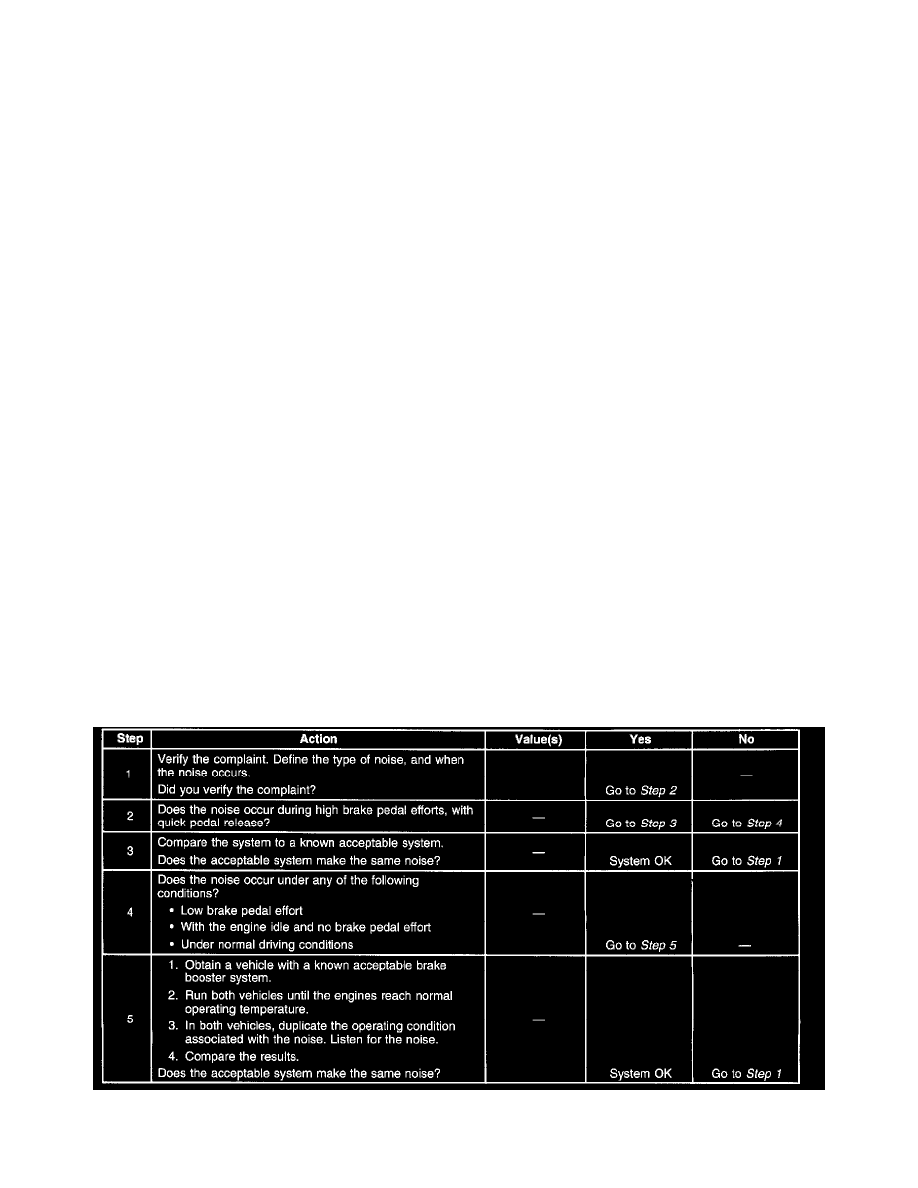K 1500 Suburban 4WD V8-6.5L DSL Turbo VIN F (1999)

seal damage will result.
3. Ensure that the power steering pump reservoir is properly filled.
If the power steering fluid contains air, refer to Bleeding Power Steering System in Power Steering System.
4. Check the power steering pump belt for wear and improper tension.
5. Check the power steering pump pressure.
Noise from the relief valve is normal when applying the brakes. Firmly applying the brake pedal while the vehicle is parked also causes noise. The
noises are the result of air allowed into the fluid during these conditions. The air remains in the fluid only temporarily.
Power steering pump noise can be confused with transmission, rear axle, or generator noise.
The following noises come from the hydraulic booster. The noises may be cause for a customer complaint. Noises may be normal and temporary.
Noises may be a sign of wear, or evidence of air in the hydraulic booster or power steering system
^
A moan or low frequency hum (usually accompanied by a vibration in the brake pedal or steering column) may be noticed during parking or other
low speed maneuvers. The moan may be caused by insufficient power steering fluid, or air in the fluid. Holding the steering wheel turned as far as
possible in one direction holds the power steering pump at relief pressure. Holding the pump at relief pressure for more than 5 seconds causes air
to enter the system. Verify the cause of the noise using the following procedure.
1. Check the fluid level. Fill as needed.
2. Turn OFF the engine.
3. Allow the vehicle to sit for 1 hour. Any air in the system will escape.
4. Verify that the moan is no longer present. If the moan persists, refer to Bleeding Power Steering in Power Steering System.
^
You may hear a high-speed fluid noise when fully applying the brake pedal. The noise is normal.
^
You may notice a slight hiss while the accumulator pressure is in use. This is hydraulic fluid escaping through the accumulator valve. The noise is
normal.
^
If the accumulator is empty when the engine is started, a hissing noise may be heard during the first brake application or steering maneuver. The
noise is fluid rushing through the accumulator charging orifice. The noise is normal. The noise should be heard only once after the accumulator is
emptied.
If the noise continues, even though no apparent accumulator pressure assist occurred, the noise may indicate that the accumulator is not holding
pressure. Check the accumulator. Refer to Accumulator Leak-Down Test in Hydraulic Brakes.
^
Normal hydro-boost units produce characteristic noises. These noises usually occur when the brake pedal is manipulated in an unusual manner.
The general types of normal operating noises are hissing noises and clunk/click/clatter noises.
^
Hissing noises that occur with a brake pedal effort of 266 N (60 lb) or more are normal. The noise is particularly noticeable with the vehicle
motionless. The noise will increase in intensity if the pedal pressure exceeds 266 N (60 lb) or the operating temperature increases. Loud
hissing noises at or below normal pedal effort 111 N (25 lb) should be investigated.
^
Clunk, click, or clatter noises will be heard when you quickly release the brake pedal from hard effort 222 - 444 N (50 - 100 lb).
